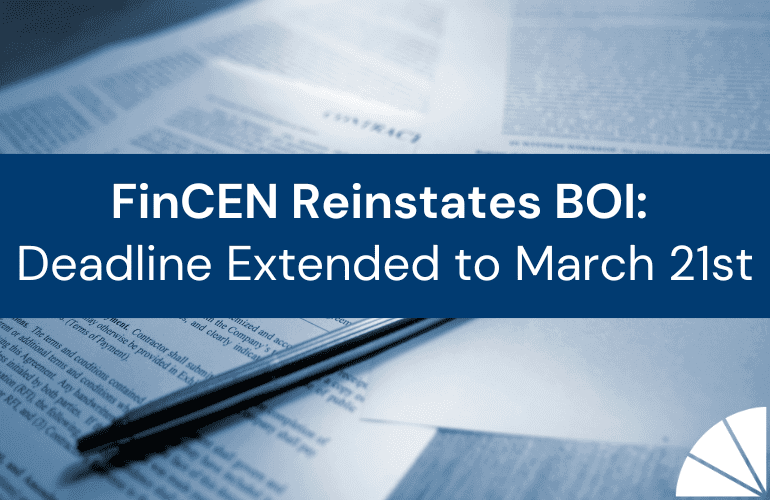
Ensuring that your 401(k) plan is operating in compliance with the various rules and regulations set by the Department of Labor (DOL) is an area often overlooked by business owners. However, it is important to know what areas the DOL has historically identified as common plan failures, and how to ensure that your plan is in compliance.
Follow Your Plan Documents
The easiest place to start is the plan documents. Typically, this includes the basic plan document which governs all aspects of the plan and can be supplemented by an adoption agreement that allows the employer to make specific choices for each plan area.
Fiduciary Duty
Also, plan administrators are required to perform their fiduciary duty on behalf of all of plan participants. This includes various monitoring activities, such as reviewing investment options, monitoring fees, etc. It’s important to ensure that minutes for all committee meetings involving the 401(k) plan are maintained to provide evidence that this fiduciary duty is being performed.
Contributions
Contributions is the one of the most common areas in which the DOL has found issues requiring corrective action. The first step in determining the proper treatment of contributions is to ensure that participant eligibility is being determined properly as defined in your plan documents. This means that all employees who meet the eligibility criteria (typically based upon age or length of service) are provided an equal opportunity to participate, and ineligible employees are not.
Also, eligible compensation (as defined in your plan documents) must be consistently applied. Each plan document can have its own definition of eligible compensation, and the definition can vary depending on the situation (employee & employer contributions, profit-sharing contributions, nondiscrimination testing, etc). It’s also important to ensure that each employees’ deferral elections are being entered into the payroll system properly and in a timely manner to ensure that the correct amount of contributions are being calculated. Plan administrators must also ensure that individual employee contributions do not exceed the IRS limitations (for 2019, $19,000 + $6,000 catch up contributions for participants over 50 years of age).
These contributions should be deposited into the plan in a timely manner. This is defined as the amount of time in which the funds are reasonably segregable and it is administratively feasible to deposit the funds. While there is no defined number of days in which a contribution is determined to be late, the DOL will typically review the amount of time it has normally taken to remit the funds to determine whether the deposit is late or timely.
Distributions
Regarding distributions, the DOL has identified two areas in which errors are most likely to occur.
- Hardship Distributions – Eligibility must be confirmed prior to allowing a hardship distribution. A hardship distribution may only be made if the distribution is both due to an immediate and heavy financial need, and is limited to the amount necessary to satisfy such need.
- Required Minimum Distributions – RMD’s are usually required to be made on an annual basis for each participant in the plan year in which the participant turns 70 ½. Failure can result in significant penalties, including a 50% excise tax on the amount not distributed as required.
Filing Requirements
There are a significant number of annual filing requirements for every 401(k) plan (i.e. 1099-R submittals, nondiscrimination testing, Form 5500, Form 8955-SSA, etc). However, the most common error is the failure to submit the Form 5500 in a timely manner. This form is the annual tax return for an employee benefit plan and is required to be filed by July 31 (but is usually extended to October 15 using the Form 5558). If your plan is considered a “large plan”, which is typically defined as a plan with more than 100 eligible participants at the beginning of a plan year, an audit is required. The plan’s audited financial statements are required to be attached to the Form 5500 upon filing. If you think your plan may be in need of an audit, read about LGA’s employee benefit plan audit services.
Internal Controls
In order to mitigate that likelihood of plan failures, internal controls should implement in each step of the process. While there are hundreds of internal controls that can be used, some important controls are listed below:
- Establish a committee responsible for reviewing plan performance, and document any decisions made regarding investment options, annual employer matches, changes to the plan and laws and regulations, or any other significant decisions made by the committee.
- Define processes for anything performed manually. This typically includes employer matching contribution formulas, entering deferral rate changes into payroll, remitting contributions, reviewing distribution and loan applications, etc.
- Ensure that eligible compensation is properly defined within the payroll system based upon the definition in the plan documents
- Confirm which activities are being performed by your custodian and/or third-party administrator, and review the work that they perform
- Ensure proper segregation of duties within the administration of the plan
- If required, perform due diligence in selecting an audit firm that has expertise in performing such audits
Making Corrections
If you determine an error was made regarding the 401(k) plan that requires monetary corrections, the IRS provides the following three programs:
- Self-Correcting Program – May be used for many errors without penalties, including failure to follow the plan document (depending on the significance of the error), excluding eligible participants, missed contributions, and loan failures.
- Voluntary Correction Program – May be used when failures, such as not maintaining a current plan document or not following the plan document, and noncompliance with federal tax laws. The VCP includes a written compliance statement showing the IRS approves your corrections and helps protect that tax-status of the plan.
- Audit Closing Agreement Program – Used after the IRS performs an audit and determines that corrective action is necessary.
In any case, it is advisable to work with your third-party administrators to ensure that your corrective action is correct, as certain errors require different corrective action, such as only funding a portion of missed contributions or having to fund estimated lost earnings. LGA can provide a range of services for fiduciaries of 401(k) plans and we’d be happy to talk.
Written by Adam Shaker





